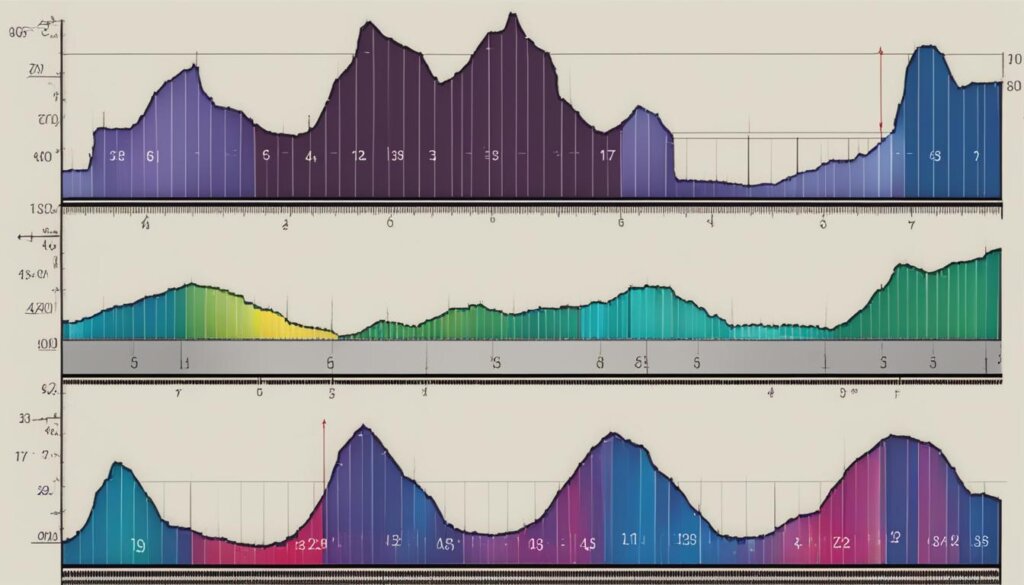Table of Contents
Welcome to our quick guide on understanding integers. In this article, we will provide you with an overview of what integers are and how they are used in various contexts. Whether you’re a student learning mathematics or someone interested in computer programming, this guide will help you gain a solid understanding of integers.
An integer is a mathematical term that encompasses all whole numbers and their opposites, excluding fractions or decimals. It is represented on a number line, where positive numbers are to the right of zero, and negative numbers are to the left.
When adding two integers with the same sign, you simply add them and keep the same sign. For example, (-3) + (-6) = -9. However, when adding two integers with different signs, you subtract them and keep the sign of the number with the larger value. For example, (-5) + 8 = 3.
Subtraction of integers involves changing the sign of the number being subtracted and then using the rules for adding integers. The absolute value of a number is its numerical value without considering its sign, and it is always positive except for zero.
Multiplication and division of integers also follow specific rules, which we will cover in detail later in this guide. Additionally, we will explore the use of integer data types in programming languages and their importance in efficient calculations and program flow control.
Stay tuned as we delve deeper into the world of integers and equip you with the knowledge you need to handle them confidently. Let’s get started!
The Number Line and Adding Integers
Integers can be represented on a number line, with positive numbers to the right of 0 and negative numbers to the left. This visual representation helps in understanding the concept of adding integers.
Adding Integers with the Same Sign:
When adding two integers with the same sign, add them and keep the same sign. For example, +8 + 11 = +19. This is because when adding positive numbers, the value increases.
Adding Integers with Different Signs:
When adding two integers with different signs, subtract them and keep the sign of the number with the larger value. For example, -15 + 7 = -8. This is because when adding numbers with different signs, we are essentially finding the difference between them.
“The number line provides a visual representation of the relationship between positive and negative numbers. It helps students grasp addition and subtraction of integers more easily.”
To further illustrate this concept, let’s consider the following examples:
| Example | Addition | Result |
|---|---|---|
| Example 1 | +8 + 11 | +19 |
| Example 2 | -15 + 7 | -8 |
The number line serves as a visual aid to understand the addition process. It allows us to visualize the direction in which the result lies based on the signs of the numbers being added. By following the rules mentioned above, we can accurately add integers and determine the resulting value.
The number line shows the positioning of positive and negative integers, with zero as the reference point. It helps us interpret the addition of integers and determine their relative values.
Subtracting Integers
In order to subtract integers, we follow a simple process that involves changing the sign of the number being subtracted, and then using the rules for adding integers. Let’s take a look at a couple of examples to understand this better:
+12 – (+4) can be rewritten as +12 + (-4) = 8
In this example, we change the sign of +4 to -4 and then add it to +12, resulting in 8.
+16 – (-6) can be rewritten as +16 + (+6) = 22
In this case, we change the sign of -6 to +6 and then add it to +16, giving us a final answer of 22.
This method allows us to convert subtraction problems involving integers into addition problems, making them easier to solve. By understanding the concept of changing the sign and applying the rules for adding integers, we can perform subtraction calculations with confidence.
Practicing Subtracting Integers
Let’s practice some more subtraction problems involving integers:
| Subtraction Problem | Solution |
|---|---|
| -10 – (-7) | +3 |
| +15 – (+9) | +6 |
| -8 – (+5) | -13 |
| +20 – (-12) | +32 |
By following the method of changing the sign and applying the rules for adding integers, we can easily find the solutions to these subtraction problems.
Absolute Value of Integers
The absolute value of an integer is the numerical value of the number without considering its sign. It is always positive, except for zero. The absolute value of a number is often used to determine the distance between that number and zero on a number line.
For example, the absolute value of 5 can be written as |5| = 5, and the absolute value of -8 can be written as | -8 | = 8. In both cases, the absolute value is the positive version of the number, regardless of its original sign.
The concept of absolute value is important in various mathematical calculations and real-life scenarios. It allows us to compare magnitudes and measure distances between numbers. By focusing solely on the numerical value, the absolute value eliminates the influence of positive or negative signs.
“The absolute value of an integer provides a way to explore the value itself, disregarding its positive or negative nature. It helps us understand the numerical magnitude and compare numbers effectively.“
To illustrate the idea of absolute value, let’s consider a number line:

Using Absolute Value to Find Distance
When dealing with numbers on a number line, the absolute value helps determine the distance between a number and zero. By finding the absolute difference, we can gauge the magnitude of the gap between two points.
For example, when finding the distance between -3 and 2 on a number line, we calculate | -3 – 2 |, resulting in 5. This means that the absolute distance between -3 and 2 is 5 units.
Real-Life Applications
The concept of absolute value finds practical applications in various disciplines. For instance, in physics, it is used to calculate the magnitude of a vector or the absolute speed of an object. In finance, the absolute value can be utilized to measure the deviation from an average or determine the percentage change in a stock’s price.
The absolute value of integers proves invaluable in solving mathematical problems and understanding the numerical world around us. By considering numerical magnitude independently of positive or negative signs, absolute value enables precise comparisons and accurate measurements.
Multiplying Integers
In the previous section, we learned how to add and subtract integers. Now, let’s explore the concept of multiplying integers. Multiplication allows us to quickly determine the total value when we have repeated addition or groups of numbers.
When multiplying integers, the outcome is determined by the signs of the numbers being multiplied.
When multiplying integers with the same signs, the answer is always positive.
For example, (-5) * (-5) = +25. Both numbers, -5 and -5, have the same negative sign, so when we multiply them, the result is positive 25.
When multiplying integers with different signs, the answer is always negative.
For example, (+5) * (-5) = -25. In this case, one number has a positive sign (+5) and the other has a negative sign (-5). When we multiply them, the result is negative 25.
To better visualize the concept of multiplying integers, let’s take a look at the following table:
| Positive Integer | Negative Integer | Product |
|---|---|---|
| 5 | -5 | -25 |
| -10 | 3 | -30 |
| 8 | -2 | -16 |
As you can see from the table, when multiplying a positive integer with a negative integer, the product is always negative. This rule applies no matter the numbers involved.
Dividing Integers
When dividing integers, it’s important to understand how the signs of the numbers involved will impact the result. Let’s take a closer look at the two scenarios:
Dividing Integers with the Same Signs
When dividing integers with the same signs, the answer will always be positive. This means that if both numbers are positive or both numbers are negative, the result will be positive.
Example: (-5) ÷ (-5) = +1
Dividing Integers with Different Signs
When dividing integers with different signs, the answer will always be negative. This means that if one number is positive and the other number is negative, the result will be negative.
Example: (+5) ÷ (-5) = -1
Understanding the rules for dividing integers with the same and different signs is crucial to obtaining the correct results. These rules can be applied to solve various mathematical problems involving integer division.
Let’s visualize this concept with a simple example:
| Dividend | Divisor | Result |
|---|---|---|
| -8 | -2 | +4 |
| -8 | +2 | -4 |
| +8 | -2 | -4 |
| +8 | +2 | +4 |
By referring to the table above and applying the rules discussed, we can see how the signs of the numbers dictate the resulting answer when dividing integers.
Integer Data Types in Programming Languages
In programming languages, integer data types are used to represent whole numbers. They play a crucial role in various operations and calculations within computer programs. Integer data types can have different sizes and ranges, depending on the programming language and the type of computer being used.
Let’s take a look at some examples:
C++ Integer Data Types
C++ offers a range of integer data types, each with its own size and range. These data types include:
| Data Type | Size (in bytes) | Range |
|---|---|---|
| short | 2 | -32,768 to 32,767 |
| int | 4 | -2,147,483,648 to 2,147,483,647 |
| long | 4 | -2,147,483,648 to 2,147,483,647 |
| long long | 8 | -9,223,372,036,854,775,808 to 9,223,372,036,854,775,807 |
C++ programmers choose the appropriate data type based on the size and range required for their specific application.
Other Programming Languages
Other popular programming languages, such as C#, Java, and Swift, also provide various integer data types with specific sizes and ranges. These data types ensure efficient memory usage and accurate representation of whole numbers.
Here are some examples of integer data types in different programming languages:
- C#:
- byte
- sbyte
- short
- ushort
- int
- uint
- long
- ulong
- Java:
- byte
- short
- int
- long
- Swift:
- Int8
- UInt8
- Int16
- UInt16
- Int32
- UInt32
- Int64
- UInt64
These integer data types in programming languages allow developers to manipulate and perform calculations on whole numbers effectively.
The table above illustrates the differences in size and range among integer data types in C++. It showcases how various programming languages provide a range of data types to meet the specific needs of different applications. These data types are crucial for managing and manipulating whole numbers efficiently and accurately within computer programs.
Overview of Integer Data Types
Integer data types play a crucial role in computer programming as they are used to represent whole numbers. These data types can vary in size and can be either positive or negative. The size of integer data types can differ across programming languages and computers, allowing for flexibility in handling different ranges of numbers.
In computer memory, integers are often represented in binary format. This binary representation enables efficient storage and manipulation of these numbers within a computer’s architecture. This binary representation allows for fast calculations and efficient memory allocation, making integer data types indispensable in various programming applications.
Programmers frequently use integer data types for tasks such as counting, controlling program flow, and performing calculations. Whether it’s counting the iterations in a loop, managing an index, or tracking numerical values, integer data types provide a reliable tool for handling whole number values. Understanding the different integer data types available in a programming language allows developers to select the appropriate type based on the requirements of their application.
FAQ
What is an integer?
An integer refers to all the whole numbers together with their opposites, excluding fractions or decimals.
How are integers represented on a number line?
Positive integers are to the right of 0, while negative integers are to the left on a number line.
What are the rules for adding integers with the same sign?
When adding two integers with the same sign, add them and keep the same sign. For example, +8 + 11 = +19.
What are the rules for adding integers with different signs?
When adding two integers with different signs, subtract them and keep the sign of the number with the larger value. For example, -15 + 7 = -8.
How do you subtract integers?
To subtract integers, change the sign of the number being subtracted and then use the rules for adding integers. For example, +12 – (+4) can be rewritten as +12 + (-4) = 8.
What is the absolute value of a number?
The absolute value of a number is its numerical value without considering its sign and is always positive, except for zero.
How are integers multiplied?
When multiplying integers with the same sign, the answer is always positive. For example, (-5) * (-5) = +25. When multiplying integers with different signs, the answer is always negative. For example, (+5) * (-5) = -25.
How are integers divided?
When dividing integers with the same sign, the answer is always positive. For example, (-5) ÷ (-5) = +1. When dividing integers with different signs, the answer is always negative. For example, (+5) ÷ (-5) = -1.
What are integer data types in programming languages?
Integer data types are used to represent whole numbers in computer programming and can have different sizes and ranges depending on the programming language and computer.
How are integers used in computer programming?
Integer data types are widely used in programming for counting, controlling program flow, and performing calculations efficiently. They are often represented in binary format within a computer.







